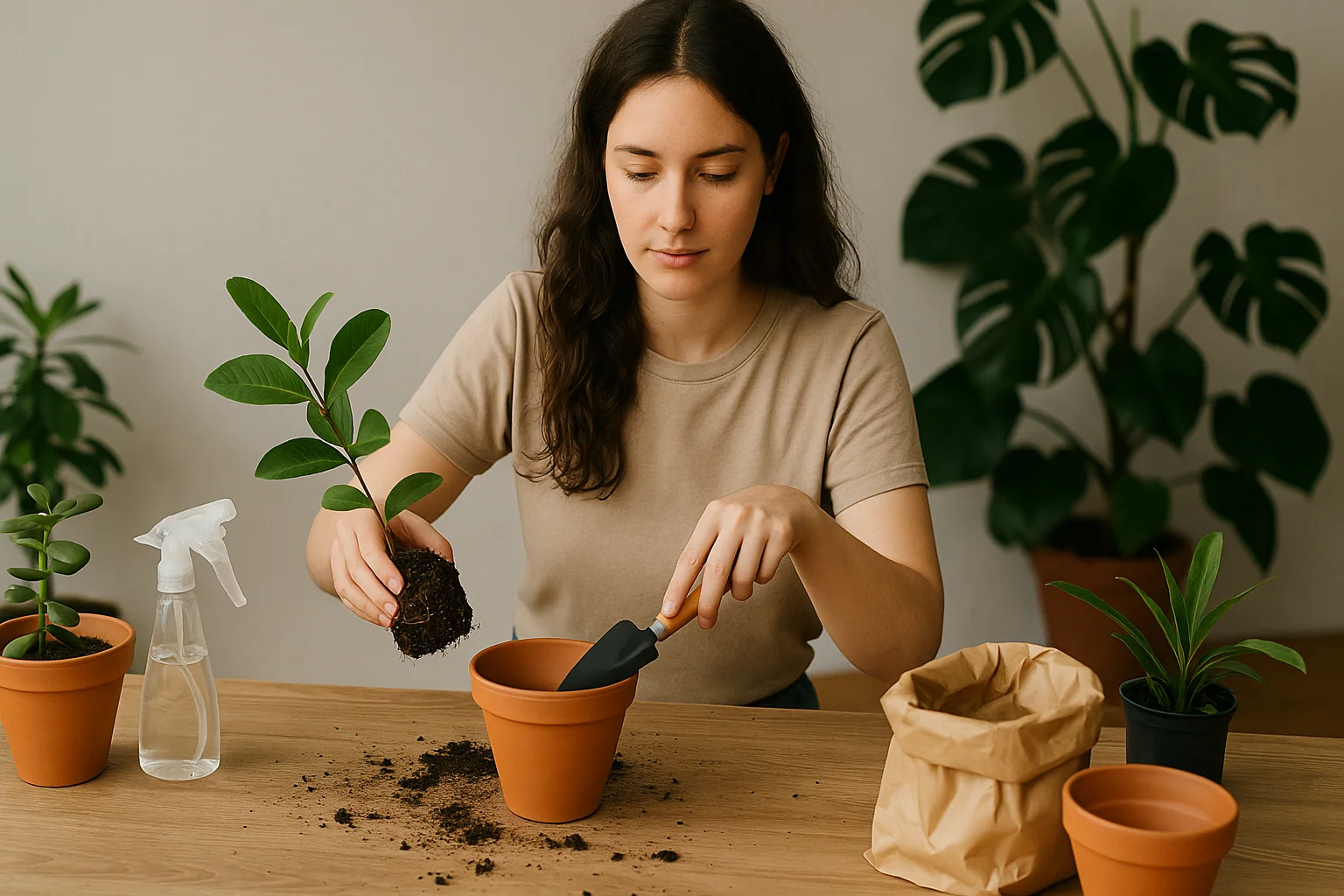10 Best Plant Identification Apps Every Gardener Should Try
Plant identification is the process of determining the exact species, variety, or family a plant belongs to by analyzing its visible characteristics and comparing them to known references.
Aspects of Plant Identification:
Visual Traits: Observing features such as leaves (shape, size, venation), flowers (color, arrangement, number of petals), stems, bark, seeds, and overall growth habit.
Habitat & Location: Considering where the plant grows (forest, wetland, desert, garden) can narrow down possible species.
Seasonal Features: Blooming time, fruiting, or leaf changes in different seasons often provide clues.
Taxonomy: Using classification systems (kingdom → family → genus → species) to place the plant scientifically.
Tools & Methods:
Traditional: Field guides, dichotomous keys (step-by-step botanical choices).
Modern: Mobile apps and AI-based tools that identify plants from photos with large databases (e.g., plant ID app Android and iPhone like AI Plant Finder can identify and diagnose plant diseases with over 97% accuracy).

Top 10 Apps
App | Features | Free vs Paid | Best Use Case |
AI Plant Finder | Plant ID by photo, disease diagnosis by photo, expert care tips, database of 300,000+ species, AI Botanist, My Garden tool with reminders, water calculator, light meter. | Freemium. | The most complete option for both houseplants and wild plants; combines identification with care and health management. |
PictureThis | Accurate plant ID, care advice, disease detection, toxicity warnings. | Freemium. | Good for gardeners wanting ID + care, but subscription can be costly. |
PlantNet | Strong on wild plants, large biodiversity database, citizen science. | Free. | Ideal for nature lovers and field use, less for houseplants. |
PlantSnap | Large database, quick snap recognition. | Freemium. | Convenient for travelers and casual users; accuracy varies. |
LeafSnap | Clean interface, focuses on leaves and trees. | Freemium. | Simple ornamental plant and tree ID, less depth. |
iNaturalist | Community-driven, crowdsourced accuracy, biodiversity focus. | Free. | Best for wild flora and ecological studies. |
Seek by iNaturalist | Gamified plant ID, child-friendly. | Free. | Great for learning and casual exploration. |
Garden Answers | Fast plant ID, gardener-oriented, community help. | Freemium. | Best for quick garden solutions. |
Planta | Combines plant ID with reminders for watering, light, pruning. | Paid for full features. | Focused on houseplant and care tracking. |
FlowerChecker | Expert-verified plant IDs (human check). | Paid per request. | Highly reliable, but slower and less scalable. |
1. AI Plant Finder 🌿
AI Plant Finder has quickly become the most advanced choice for anyone interested in both recognizing and caring for plants. Instead of focusing only on identification, it gives a complete solution.
You take a photo, and the app provides a name with remarkable accuracy. It covers over 300,000 species, which makes it one of the largest resources available. Beyond that, it checks for diseases.
Users can add their plants to a personal list with reminders for watering, fertilizing, pruning, and rotating pots. The app also calculates how much water each plant needs based on conditions like temperature and humidity, and even measures light levels through the camera.
2. PictureThis 🌱
PictureThis is popular among home gardeners because it does more than just put a name to a plant. Once identified, it gives care advice and alerts you if the plant might be toxic to pets or children.
Its database is strong, covering flowers, trees, and houseplants alike. One of its useful tools is disease detection, which allows a gardener to act before a problem becomes serious. The design is simple, and the answers come quickly. However, many of its features are tied to a subscription, which may feel costly over time.
For those who want an app that combines recognition with active care suggestions, it remains one of the more trusted names.
3. PlantNet 🌍
PlantNet is a project created with the input of scientists and nature enthusiasts around the world. It is widely known in the conservation and research community because it helps record biodiversity. Every photo uploaded strengthens its database, and users can see how their contributions are linked to larger ecological studies. It is particularly reliable for identifying wild plants, including rare species that might not be in more commercial apps.
4. PlantSnap 📸
PlantSnap was designed to make plant recognition fast and simple. A user points their phone at a flower, leaf, or tree, and the app delivers results from its wide global collection. The app claims to cover hundreds of thousands of species, and it includes not only plants but also fungi and mushrooms. This makes it attractive to hikers and travelers who want a tool for many kinds of living things.
While its convenience is high, the quality of identification depends on the photo. A blurred or poorly lit image often reduces accuracy. Many users find the free version limiting, as the more useful tools are locked behind payment.
5. LeafSnap 🍃
LeafSnap emphasizes a clean look and simple function. It focuses heavily on trees and ornamental plants, often working best when a leaf is clearly photographed. The app offers quick results, and its uncluttered interface makes it easy to use. It is good for those who want straightforward identification without a lot of extra features.
That simplicity, however, also sets a limit. It lacks the depth of scientific detail found in some other apps and does not include tools for plant health or disease. For a casual gardener or student learning about trees, it is a pleasant companion.

6. iNaturalist 🌳
iNaturalist combines technology with a large community of users, including botanists, scientists, and nature enthusiasts. When someone uploads a photo, the app suggests an identification, but the real value lies in the community verification. Experienced members confirm or correct the suggestion, which results in a highly reliable database.
It has become an essential tool for researchers and conservationists who want to monitor ecosystems and species distribution. The app is excellent for those who love fieldwork and want to be part of a global scientific effort. It does not focus on houseplants or offer care advice, so its role is more ecological than practical in everyday gardening.
7. Seek by iNaturalist 🎮
Seek was developed as a lighter, more playful version of iNaturalist. It keeps the recognition ability but presents it in a way that feels like a game. Users earn badges and achievements as they identify plants, which makes it appealing for children and beginners. It is designed to encourage curiosity and exploration of the natural world without overwhelming the user with complex data.
The app is less precise than the main iNaturalist platform and should be seen as an entry point rather than a professional tool. For families, schools, or those who want learning to be fun, it works wonderfully.
8. Garden Answers 🌸
Garden Answers is designed with home gardeners in mind. The app allows a quick snap of a plant, and within moments the user receives an identification. Along with the name, it often offers practical gardening advice. The interface is straightforward, so even beginners can use it without difficulty.
One useful aspect is the option to ask questions directly to experts or the community, making it more interactive than some alternatives. It is not meant for scientific exploration but for the practical gardener who wants help with flowers, shrubs, or landscaping plants.
9. Planta 🪴
Planta is as much a care manager as it is an identification tool. It identifies plants, but its real strength lies in scheduling and reminders. Users receive alerts about when to water, fertilize, repot, or provide more light. This makes it especially attractive for people who have many houseplants and want to avoid mistakes.
The app adapts care schedules to the environment and the specific plant species. While it can identify plants reliably, its database is not as broad for wild flora. It is built for home environments, where plants are treated more as companions than as scientific subjects. A paid subscription unlocks the full suite of features.
10. FlowerChecker 🌼
FlowerChecker takes a different approach from the AI-driven apps. Instead of relying entirely on automated recognition, it allows users to submit photos to a network of experts. Human botanists then provide identification, which makes it extremely accurate, even for rare or unusual plants that AI systems might miss.
The downside is that results take time, and the service usually requires payment per identification. It is not suitable for quick everyday use but is valuable for serious collectors, researchers, or professionals who require certainty in naming plants.
Conclusion
Plant identification apps provide clear advantages over the traditional way of using field guides or botanical keys. The biggest difference is speed: instead of leafing through pages or trying to follow a complex key, you can simply take a photo and receive an instant result. This makes them especially useful when you are outside, where time and conditions may not allow for long comparisons. Accuracy is another strength. Modern apps draw on huge global databases, sometimes with hundreds of thousands of species, and machine learning that improves with every photo submitted. A single book usually covers only one region or plant family, while an app can recognize plants from nearly anywhere in the world.
Apps also go beyond identification. Many offer care advice, watering reminders, disease detection, and even tools like light meters or water calculators. They turn into everyday plant assistants rather than simple reference tools. Carrying a smartphone is easier than taking several heavy guides, and apps are updated regularly, so their databases stay current.
